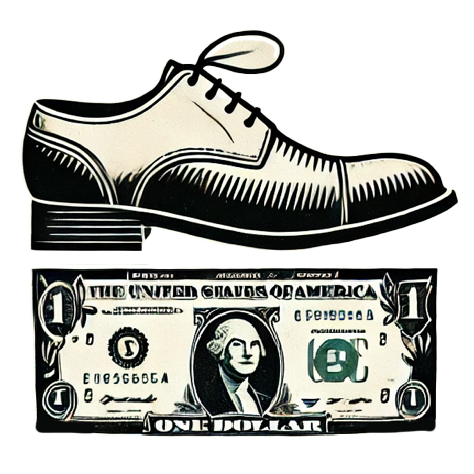As consumers grapple with the constant pinch of rising prices, a darker cloud looms on the horizon: stagflation. This term refers to the dismal combination of stagnant economic growth, soaring inflation, and high unemployment—a scenario that many economists are warning could soon confront the United States. Brett House, an esteemed economics professor at Columbia Business School, highlights the increased risk stemming from recent tariff policies enacted during the Trump administration. According to him, these tariffs are not merely administrative tools but rather catalysts that might precipitate a perfect storm of economic stagnation and inflation.
The recent analysis provided by a panel of economists suggests that the risk of stagflation is higher today than at any other time in recent history. This assertion is echoed by Greg Daco, who posits that the instability consumers are experiencing may lead to decreased confidence regarding both employment and inflation expectations. Hence, as consumer sentiments nosedive, the specter of stagflation emerges, reviving troubling memories of the 1970s—an era marked by radical oil price shocks that led to widespread economic malaise.
Lessons from the Past: What the 1970s Can Teach Us
To comprehend the potential gravity of stagflation today, it is wise to reference the economic context of the 1970s. Back then, the U.S. was embroiled in the costly Vietnam War while facing significant job losses in manufacturing. Inflation surged, a situation exacerbated by external factors like the oil crisis, which instigated long lines at gas stations. However, some economists argue that it wasn’t just oil prices that fueled stagflation; monetary policy mismanagement played a critical role as well.
In response to this chaotic landscape, then-Federal Reserve Chairman Paul Volcker initiated aggressive monetary tightening, which succeeded in curbing inflation but also ushered in a grave recession characterized by record unemployment rates. Today, while certain parallels can be drawn—like high inflation and wavering consumer confidence—many indicators signify that we may not necessarily follow the same disastrous path. Economists such as Dan Skelly from Morgan Stanley are quick to point out that the U.S. economy is no longer as dependent on foreign oil, lessening the impact of external shocks.
The Role of Tariffs and Trade Policies
Current economic volatility largely stems from the uncertainty created by politically-driven tariffs. The tariffs enacted during the Trump presidency were intended to bolster American manufacturing but have instead led to a conundrum of increasing prices for consumers and businesses alike. Not only do tariffs directly inflate consumer costs, but they also dampen spending and curtail investment decisions as businesses grapple with unpredictability. Skepticism about future economic conditions can breed an environment where both consumers and corporations opt to hold back capital, intensifying the conditions leading to stagflation.
KPMG recently normalizes expectations by forecasting a shallow recession as inflation peaks, reinforcing the serious question of whether we are on leeway to avoid disaster. Despite not resembling the calamities of the pandemic era, the potential for a worsening economic climate can radically squeeze household budgets, altering consumer behavior dramatically.
Consumer Preparedness: Navigating Rising Prices
In light of stagnation and elevated prices, consumer strategy will play a pivotal role in navigating financial uncertainty. Economic analysts such as Sarah Foster from Bankrate advise that consumers focus on paying down high-interest debt while maintaining a solid emergency fund. The looming threat of stagflation serves as a lesson: prioritizing essential financial groundwork can insulate consumers from broader economic shocks.
Moreover, as prices are set to escalate due to tariffs, there’s also the temptation for “panic buying,” where consumers rush to purchase big-ticket items they assume will inflate further. Wisely navigating these urges requires disciplined budgeting and a focus on financial health rather than short-term returns.
Despite the growing concerns, there are opportunities within the current landscape. High-interest savings accounts present a tool for consumers looking to safeguard their funds while still earning inflation-beating returns.
A Multifaceted Economic Landscape
The possibility of stagflation has economists jointly dialecting about policy changes at the federal level that could mitigate its onset. Some view the Trump administration’s tariff-heavy approach as detrimental. Reducing tariff uncertainties and easing immigration restrictions might foster a more effective labor market, thereby staving off stagnation.
The conversation around these complex issues underscores a simple yet crucial truth: swift, deliberate policy actions can significantly alter the economic trajectory. While stagflation is not an inevitability, the current trajectory indicates a critical need for innovative responses to navigate these turbulent times, allowing policymakers to sidestep the specter of an economic double whammy.

